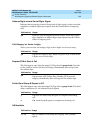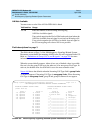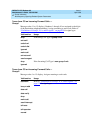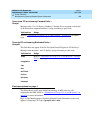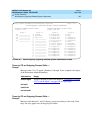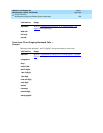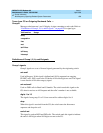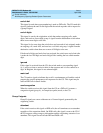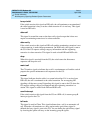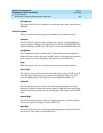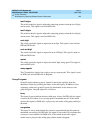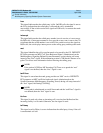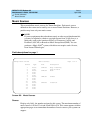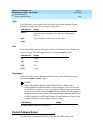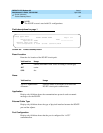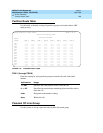
DEFINITY ECS Release 8.2
Administrator’s Guide
555-233-506
Issue 1
April 2000
Screen reference
841Multifrequency-Signaling-Related System Parameters
17
busy-rt-attd
If the switch receives this signal on DID calls, the call terminates at an attendant if
the called extension is busy or at the called extension if it is not busy. This signal
is used on DID calls.
data-call
This signal is treated the same as the data-verify signal except that it does not
require a terminating extension to be a data extension.
data-verify
If the switch receives this signal on DID calls and the terminating extension is not
a data extension, it sends intercept treatment. On DOD calls, this signal is sent to
the CO if the CO requests calling-category information and the originating
extension is a data extension. This signal is used on both DID and DOD calls.
drop
When this signal is received from the CO, the switch starts the disconnect
sequence and drops the call.
maint-call
The CO sends a signal to indicate that a call is a maintenance call and the switch
prepares the special maintenance call sequences for the CO.
normal
This signal indicates that the caller is a normal subscriber. If it is received on a
DID call, the call is terminated at the called extension. For an outgoing MF
signaling call that uses group II signaling, this signal is sent to the CO when the
CO requests calling-category information and the originating extension is a
station. This signal is used in both DID and DOD calls.
send-intercept
If the switch receives this signal from the CO on a DID call, it returns group B
intercept signal to the CO.
toll-auto
This signal is used in China. This signal indicates that a call is an automatic toll
call. When the call terminates at a busy station and a special busy signal is
defined, the busy signal is sent to the CO. You can define the special busy signal
by choosing the option toll-busy on the incoming group B signals.



